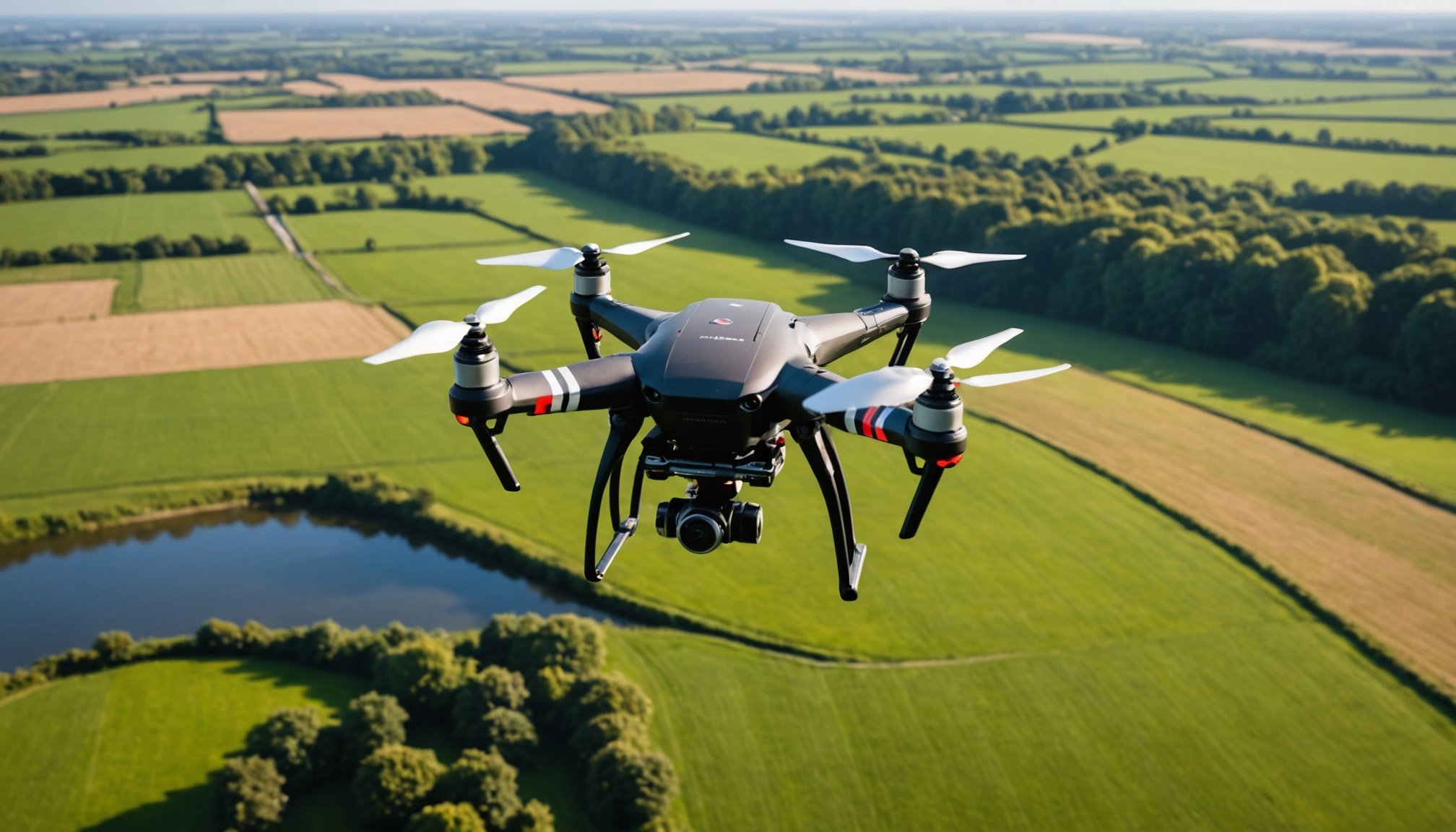Overview of UK Drone Regulations for 2023
The landscape of UK drone regulations has evolved with notable changes in 2023. As drone usage continues to rise, it’s crucial for operators to stay informed about these adjustments. The Civil Aviation Authority (CAA) remains the primary governing body ensuring safe and responsible drone operations. Additionally, new rules now further define public drone photography laws, emphasising privacy and safety.
Significant Changes in Legislation
In 2023, one significant shift is the revised classification of drones based on their weight and intended use. Compliance requirements have expanded, mandating more pilots to register and complete an updated theory test. This ensures that operators are well-versed in current regulations and aware of their impact on areas such as public safety and privacy.
A lire aussi : 2023 Essential Guide: UK Employers” Updated Maternity and Paternity Leave Regulations
Governing Bodies
Besides the CAA, other bodies like the Information Commissioner’s Office (ICO) oversee aspects related to data protection and privacy, especially concerning drone photography. Understanding each authority’s role is vital for any drone operator to remain compliant.
Legal Obligations
Adhering to these regulations is imperative. Knowing the legal responsibilities not only helps avoid penalties but also promotes safe, respectful drone usage, contributing positively to public perception of drone technology.
A découvrir également : Farmingdale observer: fresh insights for community and garden care
Key Regulations for Public Drone Photography
Understanding drone flight restrictions and other legalities is crucial for anyone interested in public drone photography. Specific local regulations and airspace rules govern drone usage, and failure to comply can lead to significant penalties.
General Flight Restrictions
Drones must adhere to a maximum altitude limit, often capped at 400 feet. This is in place to avoid interference with manned aircraft. Additionally, operators should be aware of no-fly zones, including airports, military installations, and certain government facilities. Flying drones within these areas can compromise safety and security.
Drones should always remain within the operator’s visual line of sight. This regulation ensures that drones do not stray too far, which could result in loss of control and potential hazards to people and property below.
Permissions and Licenses
Operating a drone generally requires certification, especially for commercial purposes. Commercial drone operators must acquire specific licenses and may require special permissions, which involve a detailed application process. It’s crucial to differentiate between commercial and recreational drone use, as the latter may not require as many certifications.
Privacy and Data Protection
The UK General Data Protection Regulation (GDPR) impacts how data collected via drone photography is managed. Consent is necessary when capturing identifiable people, and operators must handle data retention and sharing responsibly to ensure privacy protections are maintained.
Practical Tips for Compliance
Ensuring adherence to regulations during drone operations involves a comprehensive compliance checklist. This list acts as a vital tool for operators, ensuring that every flight meets legal requirements.
Compliance Checklist
Before embarking on your drone flight, develop a checklist that incorporates specific regulatory guidelines. These often include verifying that all drone equipment is functioning correctly, confirming pilot credentials, and checking for any airspace restrictions. By systematically following this list, operators can significantly minimise the risk of legal infringements.
Preparing for Flight
Proper preparation is crucial. Start by conducting a thorough pre-flight briefing and a safety assessment. Engaging with all team members ensures everyone understands their roles and responsibilities. It’s also essential to review weather conditions and any potential hazards in the flight area. Such meticulous planning enhances both safety and compliance.
Drone Operation Tips
During the flight, maintain communication among the crew and stick to the planned route. Monitoring real-time conditions and aircraft performance is critical. Post-flight, conduct an evaluation to identify any anomalies or areas for improvement.
Utilising a structured approach emphasises the importance of consistency and reliability in drone operations, ensuring both safety and regulatory compliance.
Safety Guidelines for Public Drone Operations
When operating drones in public spaces, drone safety practices are crucial for minimizing risks and ensuring smooth operations. Through rigorous risk management and comprehensive safety training, operators can proficiently manage these devices while maintaining public trust.
Equipment Checks and Maintenance
Routine equipment checks and maintenance are vital. Regular inspection procedures, including verifying the functionality of all drone components, significantly contribute to effective drone safety practices. Updating software ensures the drone operates with the latest security features and software enhancements. Pre-flight checks help corroborate that the drone is in peak condition before takeoff. Equally important are developing emergency protocols and understanding emergency landing procedures to address unforeseen complications during flight.
Environmental Considerations
Operators should be mindful of the environmental impact of their drones. This involves being aware of wildlife and avoiding sensitive areas to prevent disturbances. One must also manage noise pollution, especially in urban environments, where disturbances can be more prevalent. Following best practices like maintaining modest altitudes and respecting no-fly zones helps mitigate these issues and ensures that drone use does not adversely affect urban settings.
Public Engagement and Awareness
To alleviate public concerns, education about drone operations is essential. Addressing the community’s apprehensions can be achieved through engaging them in dialogue and involving them in planning. Educating the public fosters understanding and acceptance of drones, promoting safer and more harmonious integration into everyday environments.
Resources and Official Links
Navigating drone regulations in the UK starts with understanding the role of key regulatory bodies. The UK Civil Aviation Authority (CAA) serves as the primary governmental resource for drone operators, providing essential guidance and up-to-date educational materials. This includes comprehensive information on licensing, safety standards, and airspace restrictions crucial for both recreational and commercial users.
For those looking to enhance their skills, a variety of training providers approved by the CAA offer courses tailored to specific needs. These programs are indispensable for operators aiming to comply with legal requirements and improve operational expertise. Courses typically cover topics like flight skills, emergency procedures, and regulatory updates.
Industry associations also play a pivotal role in connecting drone operators with support networks. Organisations such as ARPAS-UK or DRONERESPONDERS offer invaluable resources, including forums, workshops, and newsletters that keep members informed about industry developments and emerging technologies. Engaging with these networks can provide operators with peer support, advocacy, and access to best practices.
By leveraging these resources, drone operators can navigate the complexities of regulation more effectively, ensuring safe and legal operations while staying abreast of industry advancements.
Case Studies and Real-world Examples
Exploring real-world situations helps us understand the impact of drone photography success stories and the compliance challenges businesses face. Let’s dive into some cases that bring these aspects to life.
Successful Commercial Uses
A clear example can be seen in real estate, where companies use drones to capture striking aerial imagery. These businesses often meet regulatory expectations by ensuring that operators possess the necessary licenses and permissions. This approach not only enriches visual portfolios but also establishes positive community relationships through responsible practices. Similarly, in agriculture, drones assist in crop monitoring, showcasing innovation in the sector. By adhering to regulations, these operations foster trust with stakeholders and serve as a model for integrating technology smoothly.
Lessons from Non-compliance
However, the journey isn’t always smooth. Some cases highlight the pitfalls of ignoring compliance challenges. Companies have faced fines and penalties due to unauthorized drone usage in restricted airspace. Analysis of such incidents reveals a lack of awareness or disregard for rules. To avoid these scenarios, businesses are advised to stay updated on legal requirements, train staff thoroughly, and develop clear operational protocols. By learning from these missteps, others can mitigate risks and steer their projects toward success.
Frequently Asked Questions about Drone Regulations
When engaging in drone photography, enthusiasts often find themselves pondering several common regulations inquiries. Addressing these concerns starts with understanding basic user rights.
What are the most prevalent regulations inquiries?
One of the burning questions pertains to airspace restrictions; drones are typically prohibited from flying near airports and above a certain altitude. Adhering to these laws ensures safety and respects privacy. Furthermore, pilot certification requirements often spark queries, especially regarding commercial use.
How should I interpret user rights?
Navigating user rights involves understanding where and how you can legally operate your drone. For instance, while the public airspace is open to drone usage, flying over private property can raise legal issues. It’s crucial to know these distinctions to avoid infringements.
Are there expert recommendations for tricky topics?
Indeed, seeking clarification from certified aviation authorities helps address complex inquiries. Experts often highlight the importance of maintaining awareness of both local and national laws that govern drone operations. Delving into in-depth resources provided online can further illuminate these topics.
By acknowledging these common drone photography FAQs, users can responsibly enjoy their flying experiences with greater confidence.






